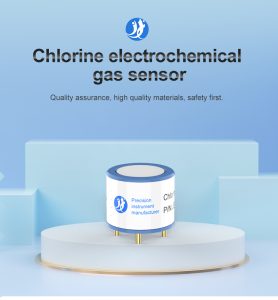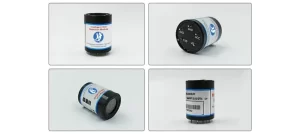Workplace safety is a top priority for companies and organizations around the world. One of the key aspects of ensuring a safe work environment is the detection and monitoring of harmful gases and chemicals. Gas sensors play a crucial role in this process, providing real-time data on the presence of dangerous substances in the air. In recent years, there have been significant advancements in gas sensor technology, leading to improved accuracy, sensitivity, and reliability. These innovations have enabled the development of new applications and solutions for workplace safety, helping to protect workers from potential health hazards.

One of the major advancements in gas sensor technology is the development of more sensitive and selective sensors. Traditional gas sensors often had limitations in terms of their ability to accurately detect low concentrations of gases or differentiate between different types of gases. However, recent innovations in sensor materials and design have led to the creation of sensors that are highly sensitive to a wide range of gases, including volatile organic compounds (VOCs), carbon monoxide, hydrogen sulfide, and many others. These sensors can detect even trace amounts of these gases, making them invaluable for ensuring workplace safety.
Another important development in gas sensor technology is the integration of wireless and IoT (Internet of Things) capabilities. This allows for the creation of sensor networks that can be remotely monitored and controlled, providing real-time data on gas concentrations and alerting personnel to any potential hazards. These networks can also be integrated with existing safety systems, such as ventilation and alarm systems, to automatically respond to gas leaks or other dangerous situations. This level of connectivity and automation greatly enhances workplace safety, as it enables proactive measures to be taken in response to gas-related incidents.
Furthermore, advancements in gas sensor technology have led to the development of portable and wearable sensors that can be easily carried by workers. These sensors are compact, lightweight, and provide continuous monitoring of the surrounding air, giving workers immediate feedback on the presence of harmful gases. This is particularly beneficial in industries such as mining, construction, and manufacturing, where workers may be exposed to hazardous gases in confined spaces or remote locations. Portable gas sensors allow for greater mobility and flexibility in monitoring workplace safety, empowering workers to take proactive measures to protect themselves from potential health risks.
In addition to these technological advancements, gas sensor innovations have also led to the creation of new applications and solutions for workplace safety. For example, advanced gas sensors can be integrated into personal protective equipment (PPE) such as respirators and gas masks, providing an additional layer of protection for workers in high-risk environments. Gas sensor data can also be combined with other environmental and health data to provide a more comprehensive view of workplace safety, enabling companies to identify potential risks and implement targeted interventions to mitigate them.

Overall, the advancements in gas sensor technology have significantly improved workplace safety by providing more accurate, reliable, and versatile gas detection capabilities. These innovations have enabled the development of new applications and solutions that enhance the protection of workers from potential health hazards. As technology continues to evolve, we can expect further improvements in gas sensor technology, leading to even greater advancements in workplace safety. By leveraging these innovations, companies and organizations can create safer and healthier work environments for their employees, ultimately contributing to a more productive and sustainable workforce.
 : +86 155 8830 2704
: +86 155 8830 2704 : jxdziot@gmail.com
: jxdziot@gmail.com
